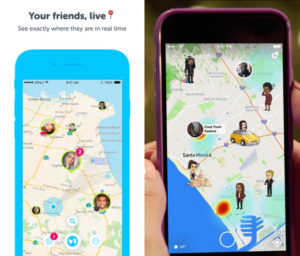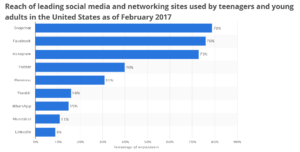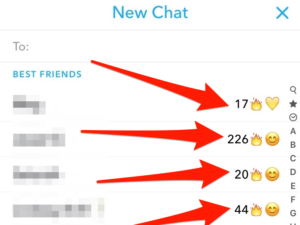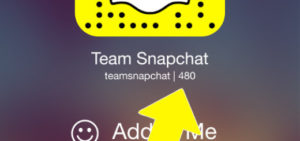Snapchat Trends: Snap Map
Note: This is the second of three articles on Snapchat. If you missed the first article, take a look: Snapchat Trends: Streaks and Scores.
I asked my 16 year old son’s friend, Nick, what he thought about Snapchat’s newest feature, Snap Map. His response was immediate and strong: “It’s creepy!”
At the end of June, Snapchat released an update to the app which includes Snap Map. This new feature allows a user to share location with all Snapchat friends, a few friends that are selected, or disappear from the map at anytime, referred to as “Ghost Mode”. When enabled, a friend can activate Snap Map and an icon representing the user will appear on the map in the user’s exact current location.
Concerns
So what should parents know about this? The first thing to consider is the critical issue of privacy and how much information our kids are sharing on social media. Privacy is one of the most difficult messages to get kids to understand and the perception that things disappear from Snapchat only clouds this message. Once something goes online, including Snapchat, privacy has been forfeited forever. I also talk to kids about the risks of “checking in” with a current location. Letting the world know an exact location at any given time is opening a huge window into your child’s private world, including home address, friends’ home addresses, school, and favorite hang out spots. Believe it or not, kids struggle to realize that they are communicating all that information.
So now enters the functionality of Snap Map, which can potentially allow any person who is a Snapchat “friend” to track your child’s every movement. Let’s think about this… according to Statista, 79% of responding Internet users, aged 13 to 24, use Snapchat.
Snapchat is reported to have 100 million daily active users. I don’t have to do the math to know that if a large number of that 100 million are our children who have Snap Map enabled, there are a lot of locations being shared online!
Another issue to consider relates to exclusion and friendships. Snapchat describes Snap Map “as a way to meet up with friends in real life rather than just watching each other’s lives on your phone.” A noble idea, to say the least. So I asked a 16 year old girl what she thought of this idea. She talked about this being another way that social media can hurt people’s feelings. She said that because she could see Snap Map with all of her friends together, she will know when her friends were getting together WITHOUT her. She added “I would just rather not know if I’m not invited. Sometimes I’m not included and that’s ok. I get it. But I don’t need to see it.” The insights that teens provide can be sobering and eye opening. She was right. We don’t need to always know what our friends are doing and sometimes we are not included.
If you are like me, the first thing I wondered was if my own children have Snap Map enabled. Obviously I could simply ask them, but that is not always the best first approach as it can lead to some defensiveness, a sure conversation blocker. One suggestion would be to simply ask them if they have heard about it. In my house, that question usually initiates a quick eye roll (which I ignore) and then some explanation of what it is. If you can provide a place for your kids to talk about it openly, you might get a feel for where you need to go with the conversation. When given the proper platform, teens can do a good job of communicating their opinions on these issues. For younger tweens and teens, this is a great opportunity to talk about privacy and sharing of sensitive information.
Helpful Hints
- Location sharing is off by default, in Ghost Mode.
- It is not possible to share locations unless you are friends on Snapchat.
- Snap Map is accessed by going to the camera screen and pinching your fingers together as if you are zooming out of a picture.
- The location is updated on the Snap Map ONLY when Snapchat is open. The location is not updated in the background of the app.
- Snaps that are submitted to Our Story can still show up on the map even in Ghost Mode.




